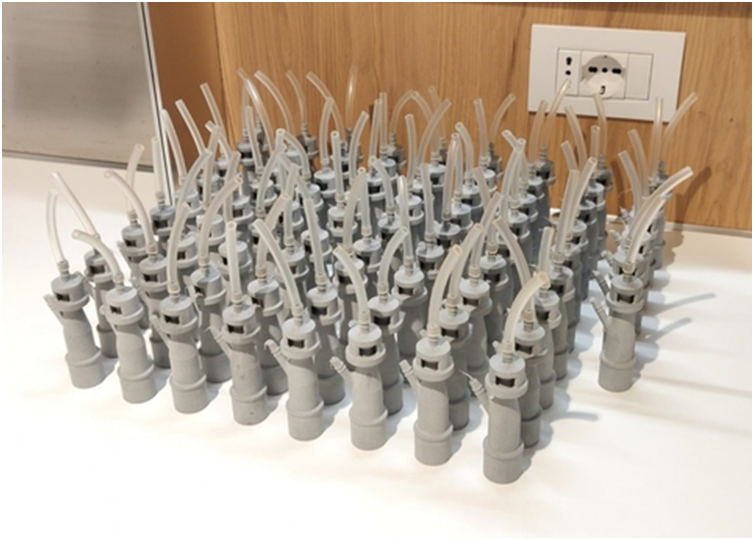![3D Printed Emergency Valves for Ventilators [Source: CECIMO ]](https://fabbaloo.com/wp-content/uploads/2020/05/3D-Printed-Valves_img_5eb06527415ea.png)
3D Printed Emergency Valves for Ventilators [Source: CECIMO]
Charles Goulding of R&D Tax Savers examines ventilator manufacture picking up with 3D printing.
Much attention has been focused on well-known major manufacturers like GM, Ford, Dyson, and Tesla who are embarking on an endeavor to produce ventilators for the first time. Nonetheless, some excellent leading manufacturers have been producing ventilators for a long time. These manufacturers include Drägerwerk AG of Germany, Getinge of Sweden, and Hamilton Medical of Switzerland.
However, even these experienced companies are facing obstacles in the wake of global production demands due to the coronavirus. In a March 31st Financial Times article, Drägerwerk CEO Stefan Dräger expressed reservations about the ability to obtain necessary ventilator components through his traditional supply chain. Hamilton Medical has doubled its output to about 500 ventilators a week and has stated it is looking for ways to simplify its machines to speed up production.
3D printing is an accessible way to manufacture components either in-house or via 3D printing service centers and contract manufacturers. Additionally, 3D printing can help simplify production by integrating components and reducing the number of required parts.
Many leading 3D printing companies have offered their services to fill supply chain gaps during this crisis. For example, Renishaw, headquartered in the UK, possesses multiple skill sets as they are also a precision product manufacturer. Carbon, a 3D printing unicorn headquartered in California, is now also offering its extensive contract manufacturing network.
Large manufacturers making ventilators for the first time will be using the power of their global sourcing departments to scoop up existing ventilator components, which will create demand for even more 3D printed parts.
Enhanced R&D tax credits are available for any company making new and improved products.
The Research & Development Tax Credit
Enacted in 1981, the now permanent Federal Research and Development (R&D) Tax Credit allows a credit that typically ranges from 4%-7% of eligible spending for new and improved products and processes. Qualified research must meet the following four criteria:
-
Must be technological in nature
-
Must be a component of the taxpayer’s business
-
Must represent R&D in the experimental sense and generally includes all such costs related to the development or improvement of a product or process
-
Must eliminate uncertainty through a process of experimentation that considers one or more alternatives
Eligible costs include US employee wages, cost of supplies consumed in the R&D process, cost of pre-production testing, US contract research expenses, and certain costs associated with developing a patent.
On December 18, 2015, President Obama signed the PATH Act, making the R&D Tax Credit permanent. Beginning in 2016, the R&D credit can be used to offset Alternative Minimum tax for companies with revenue below $50MM and, startup businesses can obtain up to $250,000 per year in payroll tax cash rebates.
Conclusion
The race to locate or create the necessary components for ventilators has commenced, and 3D printing has an important role to play.

